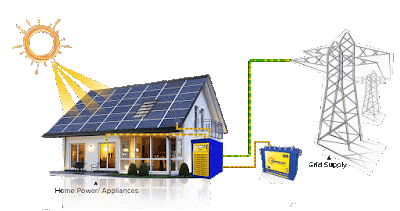What is Bi-facial Solar panel?
Bifacial solar modules offer many benefits over conventional solar panels. electricity may be generate from both side of a bifacial module, increasing general power generation. They’re frequently more durable due to the fact each aspects are UV resistant, and capability-precipitated degradation issues are reduced when the bifacial module is frameless. Stability of system cost are also reduced while more electricity can be generated from bifacial modules in a smaller array footprint.
Bifacial modules are available in many designs. Some are framed whilst others are frameless. A few are twin-glass, and others use clean backsheets. Most use monocrystalline cells, but there are polycrystalline designs. The one component this is consistent is that strength is produced from both sides. There are frameless, twin-glass modules that disclose the bottom of cells however are not bifacial. Authentic bifacial modules have contacts on each the back and front aspects of their cells.
For frameless bifacial modules, the module clamps will frequently feature rubber guards to protect the glass, and unique care ought to be taken to save you over tightening bolts and Damaging the glass.
The higher a bifacial module is tilted, the more energy it produces from its bifacial residences. Bifacial modules established flush to a rooftop block any pondered light from achieving the bottom of the cells. That’s why bifacial modules perform better on flat industrial rooftops and floor-installed arrays, because there is more room for tilt and bouncing pondered light to the rear of the modules.
The mounting system itself can affect the overall performance of the bifacial modules. Racking systems with guide rails generally covered by means of a monofacial module’s backsheet will color lower back rows of bifacial cells. Junction bins on bifacial panels have grow to be smaller or separated into a couple of units positioned alongside the panel’s edge to prevent shading, too. Mounting and racking systems specifically formatted for bifacial installations take out the question of bottom shading.
Thanks for Reading ..
Roop solar
Solar Solution Company
What is bifacial solar panel?
Bifacial modules produce solar power from both sides of the panel. Whereas traditional opaque-back sheeted panels are monofacial, bifacial modules disclose each the front and backside of the solar cells. Whilst bifacial modules are installed on a particularly reflective floor (like a white TPO roof or at the floor with light-coloured stones), a few bifacial module producers claim up to a 30% boom in manufacturing just from the extra electricity generated from the rear.Bifacial modules are available in many designs. Some are framed whilst others are frameless. A few are twin-glass, and others use clean backsheets. Most use monocrystalline cells, but there are polycrystalline designs. The one component this is consistent is that strength is produced from both sides. There are frameless, twin-glass modules that disclose the bottom of cells however are not bifacial. Authentic bifacial modules have contacts on each the back and front aspects of their cells.
How are bifacial modules installed?
The way a bifacial module is mounted depends on its type. A framed bifacial module is probably easier to put in than frameless, just because traditional mounting and racking systems are already tailored to framed models. Most bifacial module manufacturers offer their personal clamps to mount their precise brand, removing any installation hesitations.For frameless bifacial modules, the module clamps will frequently feature rubber guards to protect the glass, and unique care ought to be taken to save you over tightening bolts and Damaging the glass.
The higher a bifacial module is tilted, the more energy it produces from its bifacial residences. Bifacial modules established flush to a rooftop block any pondered light from achieving the bottom of the cells. That’s why bifacial modules perform better on flat industrial rooftops and floor-installed arrays, because there is more room for tilt and bouncing pondered light to the rear of the modules.
The mounting system itself can affect the overall performance of the bifacial modules. Racking systems with guide rails generally covered by means of a monofacial module’s backsheet will color lower back rows of bifacial cells. Junction bins on bifacial panels have grow to be smaller or separated into a couple of units positioned alongside the panel’s edge to prevent shading, too. Mounting and racking systems specifically formatted for bifacial installations take out the question of bottom shading.
Thanks for Reading ..
Roop solar
Solar Solution Company


Comments
Post a Comment